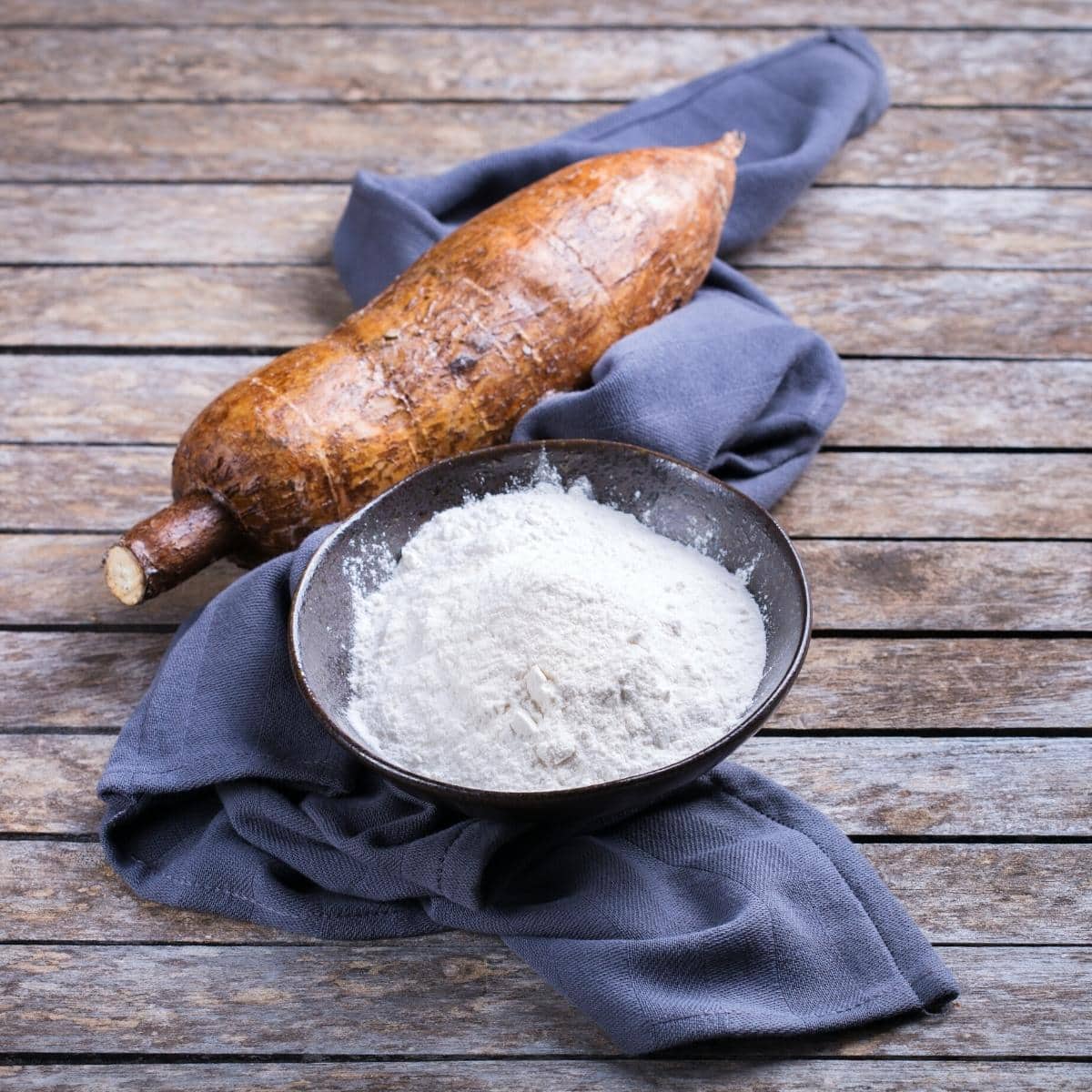How to Make Cassava Flour
Cassava flour is a versatile and unique grain-free and gluten-free flour. Let’s learn how to make cassava flour here with this easy recipe!

What is Cassava Flour?
Cassava flour is a type of flour made from the cassava root, also called yuca. It’s a staple ingredient in many cuisines, especially in Latin America and Africa. Unlike wheat flour, cassava flour is gluten-free and grain-free, making it a good option for those with gluten sensitivities or allergies. Cassava flour can be used in many different recipes, from bread and pastries to pancakes and cookies.
Ingredient Notes
Yuca root: Yuca root is the main ingredient in cassava flour. It’s a type of starchy root vegetable that’s native to South America. Yuca root looks like a large white potato and has thick, fibrous brown skin.
Water: You’ll need water to soak the yuca root and grind it into flour.
Equipment Needed
A blender or food processor: I love to use a good quality food processor for the best results and a very fine and powdery cassava flour, but a good blender will get the job done, too!
A strainer or cheesecloth: I like to use a fine mesh strainer during the cassava flour-making process.
How to Make Cassava Flour
1. Boil the yuca (cassava) root in water for about 15 minutes, or until it’s soft. Drain the root and let it cool before handling.
2. Once the cassava root is cool enough to handle, place it in a blender or food processor and blend until it forms a smooth paste.
3. Pour the blended mixture through a strainer or cheesecloth into a bowl to catch any remaining solids.
4. Place the strained mixture on a baking sheet lined with parchment paper and spread it into an even layer. Bake at 200°F for about an hour, or until the mixture is completely dry.
5. Once the mixture is dry, transfer it to a food processor or high-powered blender and blend until it forms a fine powder. Sift the powder through a fine-mesh strainer to remove any clumps.
6. Store the cassava flour in an airtight container at room temperature for up to six months.
Top Tip
The firmer and fresher the yuca root, the better the cassava flour!
More Cassava Flour Recipes
Cassava Flour Pumpkin Snickerdoodles

How to Make Cassava Flour
Ingredients
- 1 fresh yuca (cassava) root peeled and chopped
- water to cover
Instructions
- Boil the yuca (cassava) root in water for about 15 minutes, or until it’s soft. Drain the root and let it cool before handling.
- Once the cassava root is cool enough to handle, place it in a blender or food processor and blend until it forms a smooth paste.
- Pour the blended mixture through a strainer or cheesecloth into a bowl to catch any remaining solids.
- Place the strained mixture on a baking sheet lined with parchment paper and spread it into an even layer. Bake at 200°F for about an hour, or until the mixture is completely dry.
- Once the mixture is dry, transfer it to a food processor or high-powered blender and blend until it forms a fine powder. Sift the powder through a fine-mesh strainer to remove any clumps.
- Store the cassava flour in an airtight container at room temperature for up to six months.


So excited to try this !! But do I not need to remove the core first ?
It isn’t necessary in this case. Boiling makes the core perfectly safe and the taste difference is undetectable when it comes to the flour itself. I hope this helps!
Thank you for your prompt reply .. and GREAT recipes !!
Thank you so much! 🙂
Do you need to remove the “bark” from the outside with a peeler first?
Thank you so much for catching that! I’ve updated the recipe card. Yes, you want to peel it before chopping it. 🙂 The skin is rather tough, so I personally find it easier to peel with a knife over a peeler.
I bake with cassava flour all the time! Thank you for this homemade recipe. So easy!
My husband is Nigerian and we use cassava flour a lot in West African dishes (including as “swallow”) – I was curious to figure out how to make it at home (especially when I travel to Nigeria and there’s lots of fresh cassava available). Thank you for this recipe! Really loved how fresh it tasted compared to store bought.
Thanks for the reminder that I need to do this more! Just whipped up a batch and it is so much more cost-effective!
Incredible how simple is this to make. Today I made it for the first time and so glad I can make it myself from now and don’t have to give a lot of money for a little cassava flour. thanks for sharing this.
This is such a great recipe, as I can use this for when I have friends over with gluten allergies. Thank you!